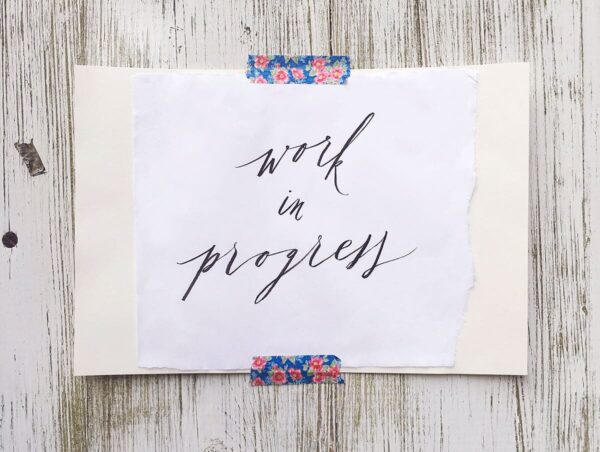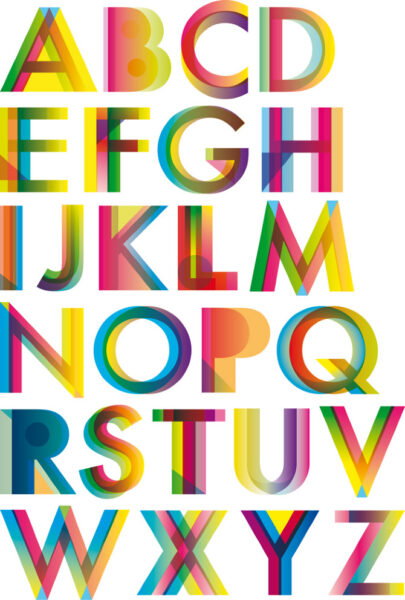Does Wearing Colored Clothes Change Our Feelings?

It was the yellow rain boots that first got me thinking about the power of colorful clothes. I bought them on a whim while out shopping with my mom: knee-high rubber wellies almost the exact hue of a New York City taxi. The next week it poured down rain and I slid them on before walking out the door to work. Every time I looked down, I felt a burst of delight that contrasted with the gloom around me.
I’ve always been sensitive to the weather. But that day I realized that I had the power to make my own sunshine, just by what I chose to wear. Since then, I’ve often turned to colorful clothes when I need a burst of energy, confidence, or a pick-me-up during a tough time. And I’m not the only one: in recent years, dopamine dressing has become a widespread trend.
But do the colors of our clothes really affect our moods? Or are colors just on the surface, a style choice and nothing more? To find out, I dug into the research on color, fashion, and emotion. And in this post, I’m sharing the surprising research that explains how colored clothes can (and can’t) influence your mood and well-being.
Does Wearing Colored Clothes Change our Feelings?
Clothing is a powerful form of non-verbal communication. And it’s probably not surprising that research shows clothing can influence the way others perceive us. Studies have shown, for example, that teachers’ assistants who dress more formally are perceived as more intelligent. And women who dress in a more masculine style for job interviews are more likely to be hired to managerial roles in banking and marketing. Style can also show when we’re stressed or overwhelmed. Research shows that when women are stressed, they wear fewer of their clothes. And neglecting as much as 90 percent of their wardrobe. (A good reminder to check in on the fashionista friend who suddenly starts wearing the same thing every day!)
But our clothes don’t just communicate to others. They can also influence our emotions and behavior, often in subtle ways. In a 2012 study by researchers Hajo Adams and Adam D. Galinsky, participants who wore a white lab coat made half as many errors on a sorting task as participants who wore their own clothes. (Note: this specific study has since failed to replicate, but a subsequent meta-analysis has shown that the overall research findings on clothing’s influence on emotions and behavior are fundamentally sound.)
Adams and Galinsky call this phenomenon enclothed cognition, an extension of a robust field of research called embodied cognition, which has found that our physical posture, movements, and sensations can have a profound, unconscious influence on our mindset and behavior. When we wear certain clothes, we embody the qualities we associate with those clothes, which in turn influences how we feel and act.
Colors and How They Make You Feel
While I’d love to be able to go through the color wheel and tell you the “right” color to wear in specific situations, the truth is that color psychology isn’t quite so simple. Cultural factors and context play a big role in how different colored clothes make us feel.
For example, let’s come back to that study about the white lab coats. In a follow-up experiment, the same researchers found that participants who wore a white lab coat more attentive only when they were told it was a doctor’s coat. When told that the white coat was a painter’s coat, they were less effective.
This suggests that the white lab coat was effective because it carries connotations of science and intelligence. And when we take those associations away, it no longer has the same effect. The takeaway: If you want colored clothes to affect your mood and mindset, the most important thing you can do is choose colors that have associations with your desired effects. (To learn more about the effect of color on different aspects of life, check out these essential books on color.)

Colors that Boost Your Mood, According to Color Psychology
According to a 2004 study by Naz Kaya and Helen H. Epps, there are some patterns in color preferences. The researchers found that colors like red and black were more commonly associated with negative feelings. While colors like blue and green evoked feelings of calmness and happiness. That these latter colors are found in nature might be one reason why we tend to find them so comforting. Notably, people had more positive emotional responses to pure colors than to black and gray. The least preferred color was yellow-green, perhaps because of its associations with vomit and sickness.
Preferences for specific hues can differ widely across cultures, however. So it’s important to recognize that context matters when choosing what color to wear. For example, red is lucky in China. And was also historically the favored color for brides to wear on their wedding day. But a Nigerian superstition holds that red is unlucky.
Color associations can also change over time. In the early 1900s, when baby clothes were first divided by gender, parents were urged to dress their boys in pink because it was a “strong” color, while pastel blue was seen as softer and reserved for girls. Now, of course, it is the reverse.
One consistent finding from color psychology is that light colors tend to be more joyful than dark colors. In a 1994 study of children’s color preferences, Boyatzis and Varghese found that light colors are more frequently associated with positive emotions (such as happiness and excitement). And dark colors such as brown and black are more associated with negative emotions (such as sadness and anger). When in doubt, if you want to boost your mood, a lighter or brighter color will usually do it.
Wearing The Same Color Can Increase Trust
Sports fans wear team colors to make them feel connected to the team. Bridal parties wear matching colored dresses and ties, and graduates wear caps and gowns. In each of these situations, shared attire creates a sense of shared identity. Instead of seeing others as strangers, you see something of yourself reflected in them. You instantly have something in common.
That sense of shared identity, in turn, changes how we behave. When we believe we’re among others with a common affiliation, we’re comfortable with less personal space and we’re more likely to trust them. This creates a powerful foundation for connection and community-building.
A real-life example is the Pink Shirt Day initiated by two Canadian high school students, David Shepherd and Travis Price, in 2007. When a fellow student was bullied for wearing a pink shirt to school, Shepherd and Price encouraged everyone at their school to wear pink the following day. The sea of pink resulted in an overwhelming sense of unity and acceptance, effectively empowering and uplifting the school’s emotional state.
Next time you’re hosting a family reunion, team-building exercise, or protest, provide a colored accessory (such as hats or scarves) or suggest that the group wear an item in the same color to build a sense of harmony.
Wearing Bright Colors May Help Boost Energy
Studies have shown that people working in more colorful work environments are more alert and joyful than people working in drab environments. While we don’t have comparable research for clothing, there are good reasons to believe that a bright pink shirt or yellow coat can act as a pick-me-up, boosting energy as well.
Bright colors reflect more light. So when we see ourselves in bright clothes, it’s a little like caffeine for the eyes: a burst of vibrancy that gives us a lift. And as we’ve see, bright colors are associated with positive emotions, which are naturally energizing.
Years ago, I had a coworker who told me that when presenting, I should wear anything but black. If you’re talking for an hour or more, he said, it’s boring for the audience to look at you and will make it harder to hold their attention. Since then, I have always opted for bright colors when presenting.

I haven’t read any specific studies that support this idea, but if you’re giving a presentation and want to make sure your audience doesn’t fall asleep, one specific color you might consider wearing is red. Studies have shown that seeing the color red can increase heart rate and other signs of physiological arousal, which correlates to alertness. Some research also reports that yellow can also increase arousal. So if you want to boost energy, red and yellow are both good options.
Note that increased arousal can feel like agitation or excitement, depending on the situation. So if you’re giving a speech about a controversial topic, you might want to stick with softer hues!
Wearing Red Can Give You an Edge in Competitions
In a 2005 study titled “Red Enhances Human Performance in Contests,” researchers Hill and Barton found that wearing red can give individuals an advantage in competitive situations. This study took advantage of the fact that during the 2004 Olympic Games, competitors for four sports (boxing, tae kwon do, Greco–Roman wrestling and freestyle wrestling) were randomly assigned red or blue outfits. Researchers found a consistent and statistically significant pattern where competitors dressed in red won more matches. This result held even when controlling for skill level, suggesting that the color red might boost confidence or intimidate opponents.
While many competitive athletes don’t get to choose what color uniform they wear, when you do have a choice, red may help you project dominance.
To Seem Less Aggressive, Don’t Wear Black
In 1988, researchers Mark G. Frank and Thomas Gilovich published a fascinating paper titled “The Dark Side of Self- and Social Perception: Black Uniforms and Aggression in Professional Sports” that analyzed the behaviors of National Hockey League (NHL) and National Football League (NFL) teams.
The researchers found that teams that wore black were penalized for aggressive behaviors significantly more often than teams that wore non-black uniforms.
It’s unclear why these teams are seen as more aggressive. Do the players behave more aggressively because they’re wearing black? Or do referees have a bias that views the black-clad players as more aggressive, causing them to make more calls against them?
The answer might be either or both. But in a follow-up experiment, the researchers asked participants to rate the aggressiveness of fictional teams. Even when all other factors were equal, teams with black uniforms were consistently rated as more aggressive. Suggesting that at least some of the effect is due to an underlying association between the color black and aggression.
Dark colors also make an appearance on the list of most gang-affiliated sports hats. As Dawnn Karen notes in her book Dress Your Best Life, half the hats on this list are black, gray, navy, or dark green. Perhaps these colors are chosen by gangs to project toughness. (Notably, the other half are red.)
Wearing Your Favorite Color Can Help You Feel More Confident
According to fashion psychologist Karen Pine, when women wear an object of symbolic value, they project more confidence. While this research didn’t cover favorite colors specifically, wearing a color that feels significant and personal may help activate this sense of personal power.
I never thought much about this until my toddler discovered a passion for wearing the color red. Given the choice, he would wear head-to-toe red every day. (He even has red sneakers and red sunglasses to match!) At first I worried that this might be too much. And often made him mix in a few other colors into his outfits. I wondered: Would others judge him (or us) for letting him walk around looking like Santa’s best elf? But I’ve come to see that he feels most like himself in red. And when doing hard things, like having to leave his parents to go to school, or climbing up the climbing wall at the playground, he’s a little calmer and more centered when he’s wearing his favorite color.
The apple doesn’t fall far from the tree. I happen to love red too, and always keep a few red accessories handy to make any outfit feel a little more me.

Wearing Color Might Help You Bring Out the Best In Others
A lot of us have been conditioned to see bright color as frivolous or unseriou. So we avoid wearing color in the workplace. But color can be beneficial in the workplace. Especially as a way to break down barriers between people and promote more flexible thinking.
Color can be disarming, as one of my readers recently discovered when she started wearing bright, patterned pants to visit a client:
I graduated college recently and moved to New York City. Though I have a creative job, a big part of it involves meeting with stern-faced, no-frills men in cold, drab, high security office buildings.
Excited to embrace NYC’s fashion culture of all-black-all-the-time, I kept my work outfits sleek and monochrome during my first few weeks on the job. I quickly began to miss my colorful pieces though, and began incorporating my favorite pattered overalls and pants back into my daily wardrobe.
Once I started dressing joyfully again, our vendors, who otherwise seemed mired in their work, began smiling at me and complimenting my outfits. One even told me that his whole office looks forward to seeing what bright pattern I’ll swing by in.
Last week I visited a vendor I’d never been to before, and my coworkers had warned me for months about the front desk man’s callousness. I was buzzed into the windowless office and walked in wearing my favorite, brightly checkered pants. The infamous desk man, without looking up, coldly ordered me to take a seat in the waiting area. I did as I was told, and while I was waiting he stood up and walked past me to look for something. He saw my pants, and warmth spread across his face. “Did you make those? They are SO fun!” he said, beaming. I couldn’t believe it, I had won over the famed mean desk man with silly pants.
Name withheld
Breaking someone out of a bad mood might be just the tip of the iceberg when it comes to the way your clothes can affect those around you. For example, a study published in the Journal of Environmental Psychology in 2012 found that even brief exposure to the color green before a task can lead to enhanced creative performance. This suggests that wearing green to work may help spark creativity among your coworkers and clients.
More research is needed into specifically how colors affect our mood and cognition. But taken together, the research we have so far shows that the color and type of our clothing can influence our own and others’ perceptions, behaviors, and emotions in significant ways. Clothing is much more than a necessity or even a fashion statement—it’s a tool that can shape our social and psychological experiences for the better.
Ready to add more color to your wardrobe, but not sure where to start? Check out this post for my top tips on creating a colorful wardrobe that works for you.






Discussion (9 Comments)
I never wear black as it makes me feel dulled down. In one job selling chocolates at a trade fair we were told to all wear black, I didn’t have black so I wore a dark purple shirt. I also had in a colourful scarf and big colourful earrings. Customers were attracted to the colour, co workers commented how great it looked, I think it definitely made me appear more approachable and friendly!
Happy to report that I am one of very few women (from my experience) that have almost no neutrals in their wardrobe, and happily embrace colour throughout. My favourites are blues or purples, and jewel tones, but I had a very yellow bedroom as a child, and am now looking to add that colour more to my wardrobe too! I certainly agree that colour gives me energy, showcases my personality and provides lots of conversation starters! Loved this article!
I wear black and neutral 99% of the time. Yesterday, I went to the Barbie movie and wore pink linen pants and a pink sequin top. My hairdresser added some pink (temporary) highlights to my hair when she heard I was going. It was fun to walk to the movie in my Barbie get up but what struck me was the reactions from other people. I got so many compliments, or people would just give me a big smile. It seemed like I actually made other peoples’ day because I was wearing colour, and of course I felt fantastic.
I’ve been evolving my wardrobe to be colorful for the last five or six years and can say that it has a very clear and strong impact on both my mood and my confidence in myself. After a lifetime of wearing dark colors and focusing on what is considered ‘flattering’ for a bigger woman I decided that I was tired of hiding my body. I felt like I was disguised as a character ‘normal girl’ when I dressed in black and gray and darker colors when Miss Frizzle is my forever style icon. So I made a pact with myself that I wouldn’t buy any black, gray or brown but instead would seek out colors, preferably bright and happy ones. I found I never wore the neutrals when there were colorful options, and I got so many more compliments and felt more like myself. As a tall woman above a size 8 it’s still challenging to find clothes in colors and so in the last year or so I’ve started making the majority of my own clothes so that I can have the exact wardrobe that I want. It’s all colors of the rainbow and while it’s definitely not a look that lends itself to hiding, I feel much happier with my body and less like I should be hiding when I dress in this way. After the personal color revolution I’ve experienced I am now embracing volume and oversized as well, another concept in fashion that I’ve been taught for my entire life is not for someone with a body like mine. Turns out I don’t need to care what anyone else thinks about how I dress and look and I can just do what I like.
As the mother of a daughter (almost four years old now) I am deeply aware of the ways that peoples comments and societal views of women’s appearance have impacted me and how much I don’t want that to be a part of her experience in the world. I have been working on being positive about my body and my appearance (and everyone else’s. We do not comment or criticize anyones body, clothes, hair) so that she hopefully doesn’t learn to hate herself as I did when I was a child and then teenager. She is teaching me how to be confident and powerful and at peace with oneself and she’s a most exuberant personal stylist. So while my colorful clothes journey started before her, it’s been deeply impacted by motherhood and my awareness of the scripts that we pass.
YESSSSSSSS to all of this. This is such an important journey – thank you for sharing your story!!!!
Hmmm. This might partially explain why I’ve been feeling a bit out of sorts this summer— somehow the clothes that fit me currently are only the black ones! Colorful accessories h3lp, but don’t seem to be enough.
I’ve always loved color. I recently had a temp job and got daily comments about how my co-workers loved my outfits. On St Patrick’s Day they said they were all waiting to see how I dressed in green!
It is possible that the “mean” man was actually just a bored man. 🙂
wow ! your collection is good.